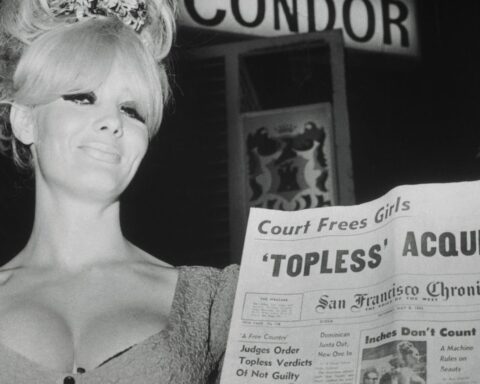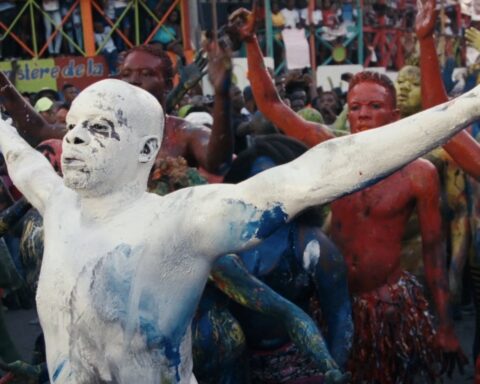If It Were Love (Si c‘était de l’amour)
(France, 82 min.)
Dir. Patric Chiha
Hot, sweaty, and hypnotic, If It Were Love stages an intimate seduction. Patric Chiha’s doc, which won the Teddy for Best Documentary Feature at this year’s Berlin Film Festival, observes the tour and preparations for Gisèle Vienne’s 2018 dance piece Crowd. The work features 15 dancers in a slow and meditative tribute to the rave scene of the 1990s. By chronicling the rehearsals and performances for Crowd, and the intimate encounters between dancers off stage, If It Were Love captures the collisions between art and nightlife.
Chiha’s film is relatively simple by design. Lengthy sequences let the camera watch as Vienne directs her dancers. Crowd tasks the dancers with channelling the mood, energy, and intimacy of the rave scene, yet challenges them to slow things down so that the audience can grasp every beat and gyration. The dancers feel the rhythms and let their bodies flow to the music. Their bodies collide and the dancefloor proves a hunting ground of sorts as their characters get to know each other’s bodies before, presumably, going off to spend the night together.
As befits the rave scene, however, If It Were Love is all about the pulsating beat at the heart of dance music. The film cuts offstage to intimate vignettes with the dancers as they discuss love, sex, desire, lust, and heartache. They discuss the inspirations for their characters as well as the desires and experiences that inform them. In some cases, the encounters in the performances lead to trysts offstage as Chiha’s camera goes into the bedrooms of the dancers for, presumably, morning-after retrospectives. The film and Vienne’s show are refreshingly inclusive in their portraits of sexuality. If It Were Love navigates the various desires of the dancers both queer and straight as the performers dissect the aspects of their own lifestyles that inform their characters’ desires.
There are confessions on the dancefloor, too, as Crowd echoes the emotions that the dancers work out backstage. In some cases, dancers/characters explore their sexual selves through the fluid choreography and navigate their co-stars’ bodies to help them better understand the impulses that drive them. The doc admittedly lags in sequences as Chiha films the scenes from a point of view that remains relatively passive—each dance performance or rehearsal appears more or less in a tableau master shot with little intimacy created by the camera in the dance scenes themselves. Once wishes the cinematography matched Crowd’s own artful seduction to make the experience more alive than restrained. Dance docs are often at their best when the camera immerses itself within the ensemble and dances along with them.
However, the intense moments between the dancers offstage invite one to interpret all the spaces left unexplored and words left unsaid as the artists perform to the mesmerizing beats. In doing so, If It Were Love, like Crowd, conveys how the rave scene afforded young people a safe space to explore and discover themselves. However, what once happened in dark halls as part of an underground subculture is now out on the stage, in the open, and celebrated to the rhythm of its own beat.
If It Were Love screens at the Montreal Festival du Nouveau Cinéma through Oct. 31.











